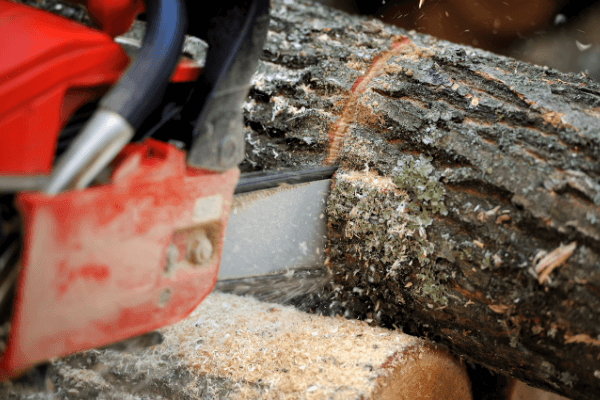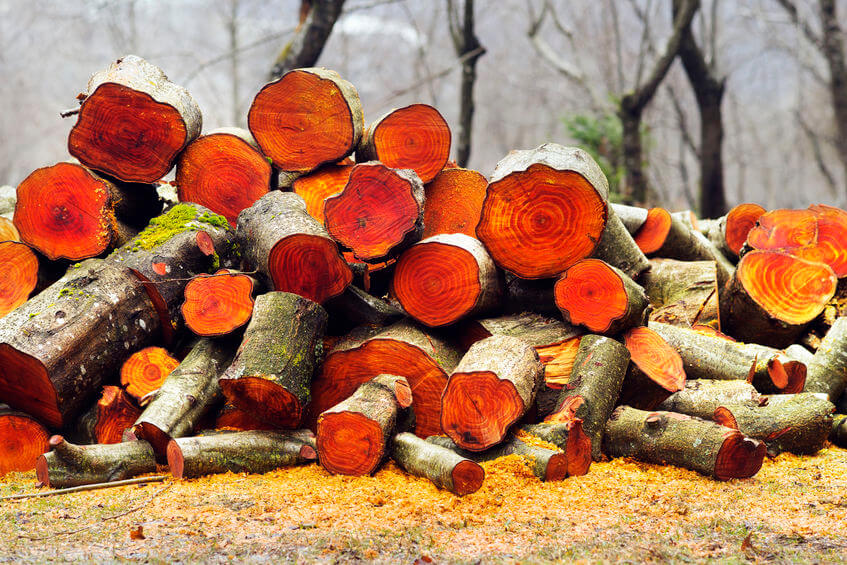- Home
- Splitting Firewood
- Drying Firewood
Drying Firewood
This post may contain affiliate links so I earn a commission.
Drying firewood is important to make sure it burns safely and efficiently.
Also known as seasoned firewood, dry firewood has a low moisture content which is roughly around 20 percent.
Green firewood is wood that has been recently cut and is still full of moisture, which is produced naturally by the tree.
Burning green firewood can be dangerous because it produces more creosote which can lead to chimney fires.
Wood that has not been allowed to dry also may take much longer to light.
Step 1: Cut and Split the Firewood
The first step to properly dry firewood is to make sure it's split.
Of course, to do this, you’ll need to have the wood on the ground first.
Drying firewood properly starts with wood that is cut at the ideal time of the year.
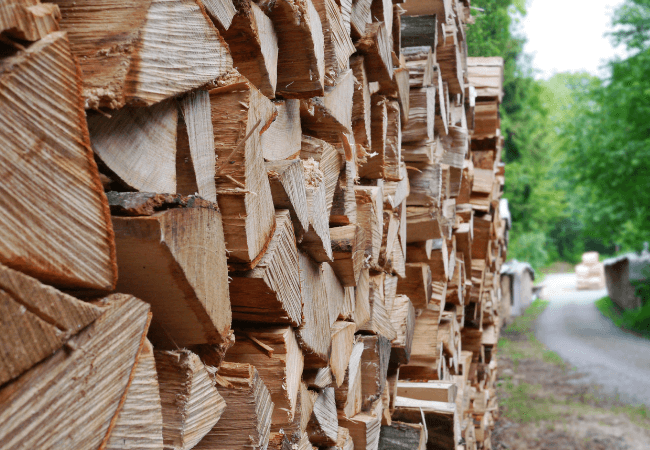
Although you won’t always have control over when you cut your firewood, the best time to do so is in the spring or the early summer.
That way, the wood will have at least six to nine months to dry out.
Cut it in the fall or winter, and it probably won’t be dry enough for you to use until next year.
Keep in mind that the species of the firewood is important because some types, like oak, can take a year or more to dry.
The longest-burning wood (and also the one that puts out the most heat) is hardwood.
It also takes longer to dry - in most cases, around 18 months.
Similarly, larger blocks of wood will also take much more time to dry.
Therefore, you should cut and split the wood into the ideal size and length before you’re ready to use it.
That way, you’ll have more surface area so it will dry in a shorter amount of time.
Splitting the wood allows air to flow over the wood, evaporating the moisture.
To split the wood, cut the whole logs into uniform rounds.
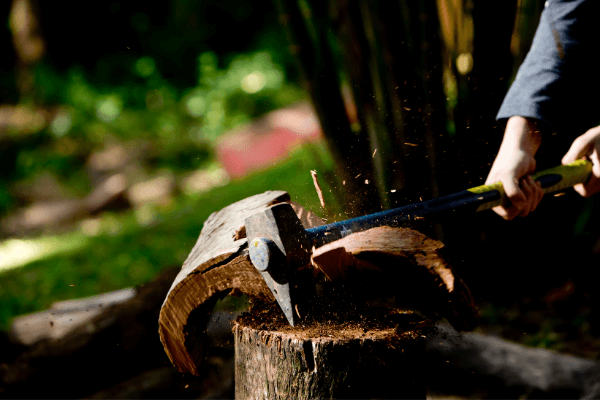
The best way to figure out what size to split your firewood to is to measure the dimensions of your fireplace or other wood burning area, then subtract three inches from the length or width depending on how you plan on inserting the wood.
Once the wood is split, it can be stacked to allow it to season.
The method in which the wood is stacked is determined by personal preference and available space.
Let's Get Stacking!
Start off by laying some material along the ground for the wood to rest on. A 2x4 works well.
Space the 2x4's about 12-14 inches apart to offer a stable base for the wood to be stacked on.
Creating a stable base is important to prevent the stack of wood from tipping over.
It's very frustrating to see your hard work be erased by a strong wind.
The base also keeps the wood from contacting the ground which causes moisture to build up and increases the possibility of an insect infestation.
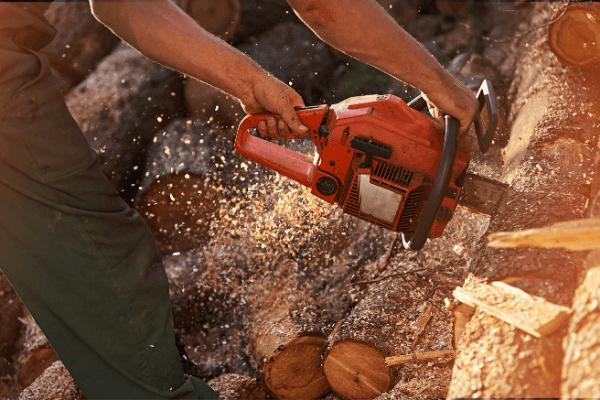
Once you have created the base, the wood can be stacked in a row.
The row can be any length and it can be stacked to any height.
Remember, wood stacked too tall can become very unstable and dangerous.
Generally, wood is stacked 4 feet tall.
Posts can be driven into the ground on either end of the row to prevent the wood from rolling off the end.
A criss cross pattern can also be used, alternating the wood back and forth.
This method is stable and allows good airflow to dry the wood.
Another good option is to stack firewood on pallets if you have access to them.
The pallets allow the firewood to be raised off the ground while allowing the wind to flow under the wood to help it dry.
Regardless of the method you choose to stack your firewood, be sure to expose the fresh cut ends to the sun and the breeze.
Most wood has around a 30 to 50% moisture content when it is first cut.
This moisture content needs to be reduced to about 20% or lower to be burned efficiently.
Most people dry their firewood outside, which is the recommended place to do so.
If you put your firewood into a wood shed immediately, assuming it will continue the drying process indoors, you’re mistaken.
It will dry out eventually, but it will take twice as long (up to two years, in fact) since it’s not getting any help in the drying process from the breeze or the sun.
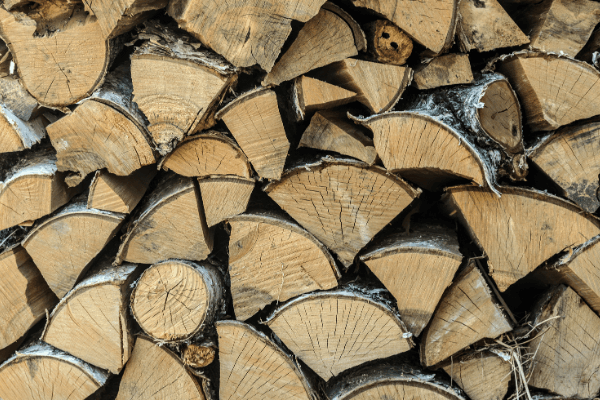
Drying firewood can be left uncovered, but it might help if you have a roof over it to protect it from precipitation.
The ends of the building should, however, be open.
When you are ready to use the firewood, consider bringing it indoors a few days before you need to burn it.
Spread it out so that the air can circulate on all sides of the wood. If it is covered in ice or snow, you may need some extra time to let it thaw out.
The Benefits Of Drying Firewood
It takes about 6-12 months to dry firewood depending on the species of wood you are dealing with.
Firewood types like oak take roughly two full years to dry out, but other species such as ash can be seasoned in just a few months.
What are the benefits to all your hard work?
The wood will be dry, easy to light and easy to burn.
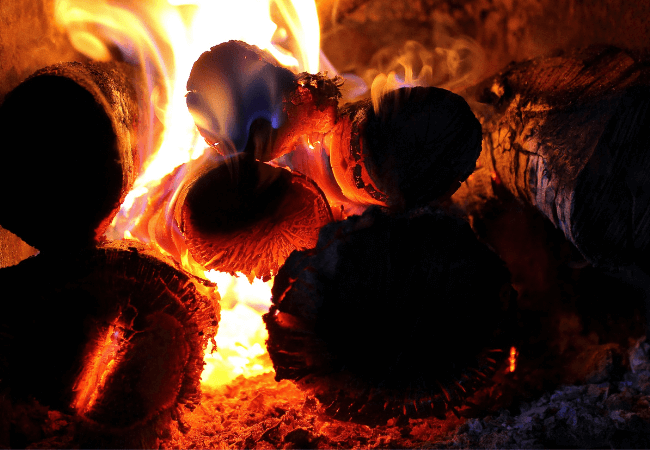
In fact, dry firewood usually catches and starts to burn within just one minute.
Not only that, but dry firewood will be lighter in weight so it won’t be as cumbersome to lug around.
The bark will peel more easily.
There might be grain cracks at the ends of the wood, but this shouldn't matter in the slightest
Plus, the seasoned wood will also produce less creosote, resulting in a safer fire.
Drying Firewood: FAQ
Can you dry firewood with a dehumidifier?
Although you could certainly use a dehumidifier to suck moisture from your firewood, it’s probably not the most effective way to do so.
Dehumidifiers use a lot of electricity and since they will constantly be absorbing moisture from the wood, they’ll burn out more quickly.
How can you tell if your firewood is dry?
The easiest way to determine whether your firewood is dry and ready to be used is to look for checks that will be at the end of the grain.
As the wood dries out, the ends split open to a quarter-inch.
Well-seasoned wood also has a distinct sound that can be heard when you bump two pieces together.
It will sound crisp and solid. Green wood will be duller and more muffled.
If you’re still not sure, you can always buy a moisture meter.
These are inexpensive devices that will tell you the moisture level about a quarter-inch deep into the wood.
Can you dry firewood indoors or in the garage?
Unless you have a very dry, heated garage or similar indoor setting, it’s not the best place to season your firewood.
Firewood dries best when left outside so that it has full access to the sun and wind.
Can you dry firewood with a fan?
Again, drying firewood outdoors is recommended.
However, if you live in a dry, non-humid environment, a fan might help circulate air in a location like a woodshed.
The ideal place to use a fan will be a setting that is warm and dry so you don’t push cold, wet air back onto your firewood.

About the Author
Obsessed with firewood, Nick is behind over 350+ of Firewood For Life's articles, as well as countless reviews, guides and YouTube videos to help readers like you reduce heating costs and create the perfect fire.
